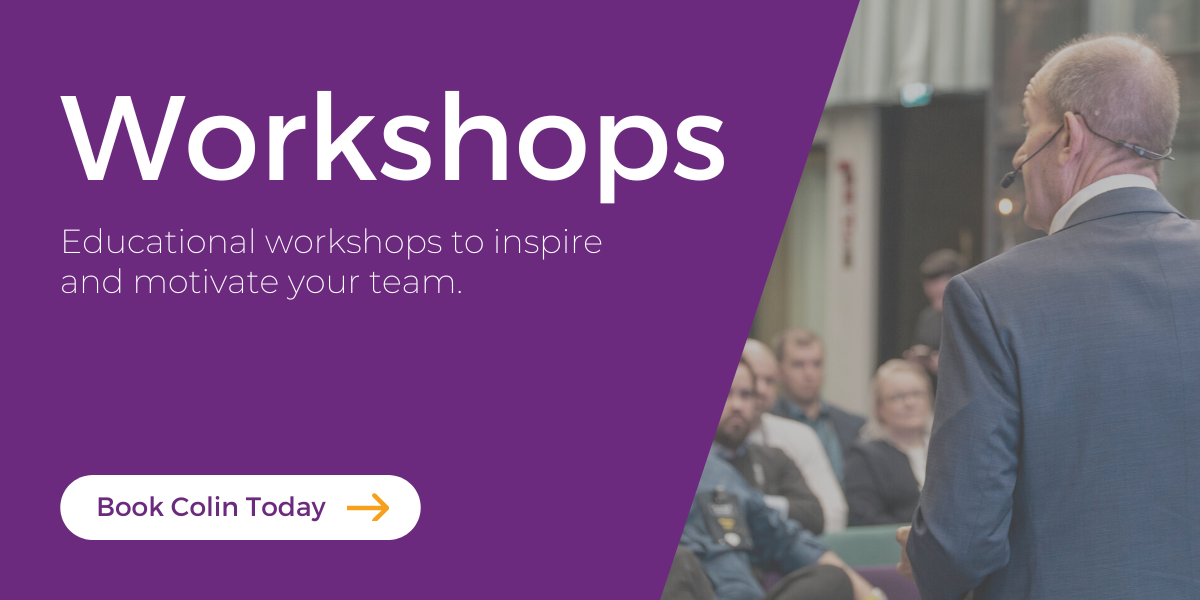FOMO, or fear of missing out, is a powerful marketing tool. The acronym denotes how we do things because we are worried about regretting not doing them later. In addition to being the subject of several research projects in psychology, it’s also a powerful marketing tool—if you know how to leverage it.
I witnessed the ubiquity of FOMO while watching the latest Avatar movie. I was sitting behind girls giggling and passing around a phone during the movie. As a member of the grumpy old man society, it was all I could do not to get into it with them about it. However, during my fuming, it also occurred to me that FOMO is a powerful driver of customer behavior.
Watch Colin talking about this on YouTube:
Subscribe to our YouTube channel here to see all the latest videos!
Part of the reason FOMO has become a part of our vocabulary is because of social media. The feeds are constantly rolling. If you are someone that participates in it, missing that scroll can be an acute trigger of FOMO anxiety. You don’t want to miss the next trend or viral meme. To do so might mean social exile, which to some people, usually with a -teen at the end of the age, is a fate worse than death.

Some Interesting Statistics You Don’t Want to Miss
I read some intriguing statistics from 2021 regarding FOMO, which include:
- 69% of people believe that they miss important events If they don’t check Facebook and Social media platforms, and those events are necessary to strengthen their relationships
- 51% of people visit or log into their social media more frequently than they did two years ago (so, since that was 2021, the authors were referring to 2019, and my guess is that number is higher than that today)
- 27% of people check their social media accounts when they wake up
- 45% of users experienced FOMO and couldn’t wait for more than 12 hours to check their social media accounts
- 20% of users can’t waste more than an hour without visiting their social media networks.
I was surprised by the prevalence of FOMO and its motivational power. I probably shouldn’t be. It is, in part, influenced by Loss Aversion. Loss Aversion explains how we hate losing things more than we appreciate gaining things. So, like FOMO, managing our hardwired reaction to Loss Aversion is a type of regret management. Missing out on the experience is losing it, in a sense.
Regret or even anticipated regret is also a powerful motivator. FOMO seems related to that as if it is a response to regret. However, when we define it in terms of social media, it’s also a social phenomenon. So, we not only fear being excluded from the experience but also being excluded socially.

Suppose all of your buddies go to a pub together, and you opt-out. They have a great time and get into a little harmless trouble that becomes a bonding experience. Now, you are on the outside because you weren’t there. Anticipating that painful eventuality might motivate you to dig deep into your energy reserves and join them at the pub even though your initial response was not to go. The desire to be a part of a group and to integrate with your clan is strong—and we fear social rejection so much—that FOMO becomes quite powerful as a behavior motivator.
Using FOMO to Bring People Together
From a marketing perspective, you can tap into these motivations. For example, making your offering core to a group of people is essential to creating FOMO in their related groups. For example, some celebrity brands leverage this psychology to significant effect. Sports teams also put out an endless feed of content about the team, the games, the injuries, the spread, and so on. As a result, fans can feel like they need to constantly check in to stay atop what’s going on with their favorite teams.
These feelings of being connected to the brands important to your group connect to your feelings of status. Your social bonds are more robust if you know about this stuff. If you are not a part of that, you will not be part of those conversations.
The Chicago Cubs have been pretty good for the past two decades. However, before that, they were the perennial losers. Yet, despite this grim performance, the Cub had an enormous and fiercely loyal fan base (and still do).
This relationship attracted the interest of a researcher who wanted to know why. He found that the value the Chicago Cubs fans got from being fans was not their winning record so much but instead the feeling that the fans were in it together. Of course, it was better when the Cubs were winning, but the bonding experience came from all the fans loving them, whether the team was winning or losing. Therefore, Tribalism is at work here, too.
Also, scarcity, or the idea that there is a limited amount of something, is too. After all, this moment will only happen once, so you don’t want to miss it. This night at the bar isn’t going to be the same tomorrow. There are limited engagements in events, too. If you miss the concert, that band might not return for a long time.

Moreover, social proof is working here, too. After all, if everyone else is buying it/going to it/cheering for it, it must be good.
Some More Stats That You Don’t Want to Miss
All of these concepts are involved in FOMO and closely tied to our emotions. There were a couple more stats that relate to FOMO regarding our feelings experienced during the experience of it (which are mostly negative):
- 39% feel envious
- 30% feel jealous
- 21% feel sad or disappointed
These negative emotions destroy value for many things. Seeing what other people are doing on social media may make us experience FOMO and feel these negative emotions. However, we still want to go back, even though we know it’s making us feel bad about ourselves.
The stats indicate that these negative emotions can drive behavior, including:
- 40% of people report spending money on something at least once a year that they intend to post about on social media
- 40% of millennials overspend or, worse, go into debt to keep up with their friends
The idea that we’re doing something, not for our enjoyment, but so that we can tell other people about it is interesting. Also, one can predict that this behavior would lead to specific choices.
So, What Does This Mean to You From a Customer Experience Perspective?
There are a few ways that you can meet these needs to provide an experience your customer will appreciate. Let’s go through a few of them here.
- Create FOMO: if you want to motivate other people to do what your customers are doing, it’s not enough to deliver a great experience. It would help if you thought about how people can share those experiences with others. So, that might mean practical things like providing opportunities for people to take pictures or videos that customers can post. State parks have started identifying good picture points, as has Disney. Signaling these to customers facilitates sharing and generates FOMO.
- Make it easy to share: In addition to designating places that are good for pictures, you should make it easy for people to share. Provide good network wi-fi or high-speed internet in your experience, making it simple to upload and travel through the world wide web. If you don’t and rely on customers doing it later, you might miss out on the emotions that made people want to share your experience.
- Leverage how your product or service connects people: One excellent way to leverage FOMO for your organization is to emphasize how your product or service facilitates community. For example, a paper plate company used a campaign about how using paper plates allows you to eat at larger gatherings together. The paper plates, which one might have considered insignificant before, make these memories possible. There are a lot of offerings that do something similar, which can be a powerful message for your customers.

FOMO is a mighty force for motivation in customer behavior. While we are not advocating any actions that will make your customers anxious or depressed, we are encouraging you to find ways to leverage the effects of these feelings to enhance a customer’s experience. So, consider how your experience can not only be excellent but shared easily, and lean heavily on the idea that your products or services serve to bring people together, and you’ll have the type of success that your competition will be sad they missed.

Colin has conducted numerous educational workshops to inspire and motivate your team. He prides himself on making this fun, humorous, and practical. Speak to Colin and find out more. Click here!



